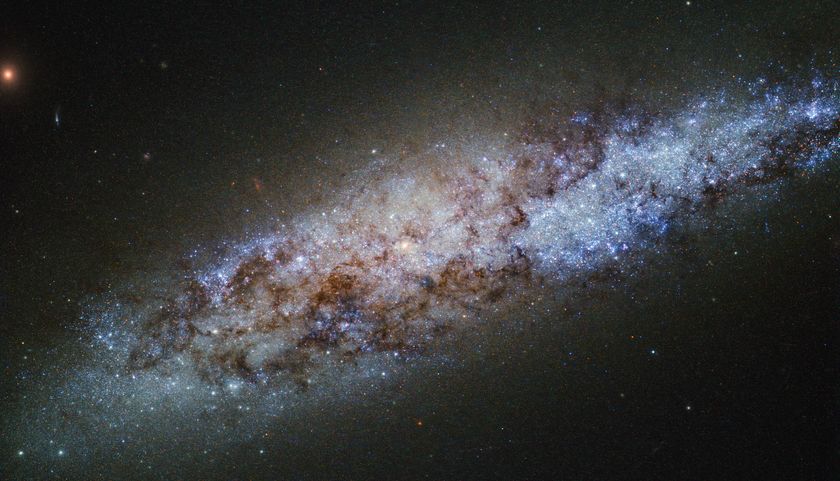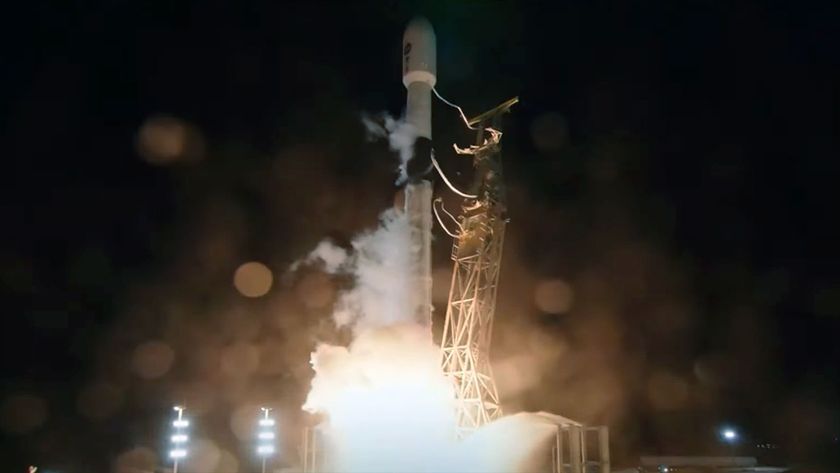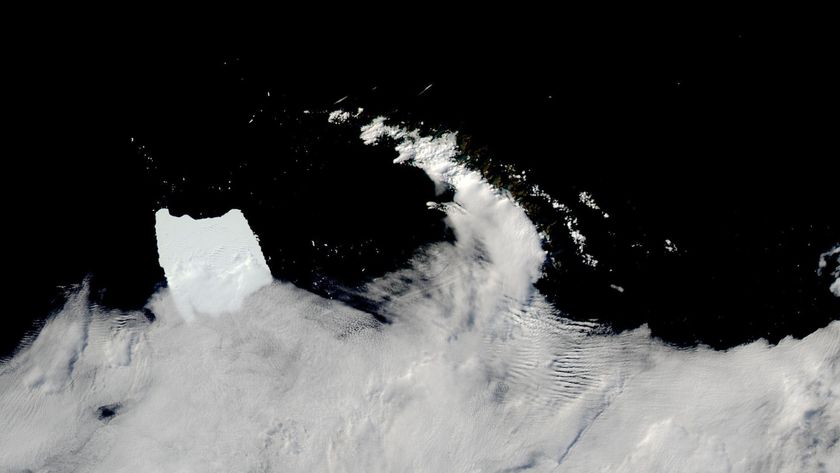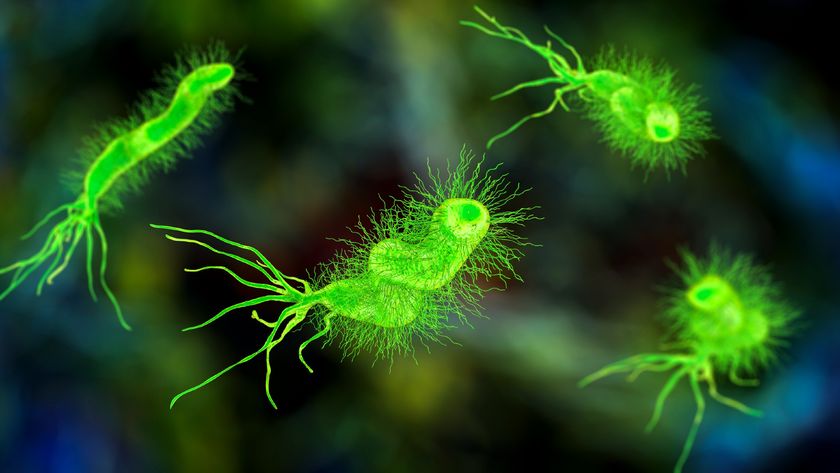A Tough Row to Hoe for Early Martian Microbes

If life existed on Mars, it would have had to deal with harsh radiation — and any traces of that life might only be found deep under the soil today.
During the Mars Society annual meeting on Sept. 22-25, held in Washington, D.C., Jennifer Eigenbrode, a biogeochemist and geologist at NASA Goddard Space Flight Center in Maryland, outlined the constraints on whether living things could have existed on the Red Planet and what obstacles they would have faced, as well as whether it's possible that any life could still be there.
It's important for scientists to make sure they recognize life when they see it, not just to learn more about the universe, but also because such life-forms could potentially be hazardous to humans, she said.
"The [Mars Science Laboratory on the Curiosity rover] was never prepared for looking for signs of life," she said. "The Curiosity rover's instruments are designed so that scientists could answer the questions of whether it's possible for life to have existed in the past and whether any traces would be detectable. That's the first thing one has to know before one looks for signatures of living things." [Amazing Mars Rover Curiosity's Latest Photos]
The challenges for living things on Mars started billions of years ago, when the planet, for whatever reason, lost its magnetic field, Eigenbrode said. That left Mars with nothing to block the solar wind, which slowly bled off the planet's atmosphere.
"This also exposed the planet surface to all of the radiation" from the sun, Eigenbrode said. "The atmosphere was being blown away. This complicates the evolution of a biosphere."
As the atmosphere thinned, more ionizing radiation could reach the ground. That type of radiation tends to break up organic molecules, which are molecules containing carbon, Eigenbrode said. She added that in lab experiments, exposure to radiation at levels similar to those on Mars' surface destroys up to 90 percent of large carbon molecules.
Get the Space.com Newsletter
Breaking space news, the latest updates on rocket launches, skywatching events and more!
If life appeared on Mars in the past, when the planet might have been wetter, with a thicker atmosphere, then organisms could have gotten a foothold, she said. That is, life could have then adapted to a higher-radiation environment over time and retreated deeper underground for protection, Eigenbrode said.
Signatures of such life might still exist now, she said; the instruments on the Curiosity rover were designed to find out if it was possible for those signs to survive. Curiosity data showed that some large carbon-based molecules remain in the soil of Mars, and they aren't just the results of contamination from the rover itself.
Eigenbrode added that future missions will have to get below the planet's surface, though, to check for traces of previous life. "If we are looking for something old from an ancient environment, we want to go deep … about 2 to 3 meters [about 6.5 to 10 feet]."
Besides protection from radiation, life also needs liquid water. Eigenbrode pointed to some encouraging signs that the vital molecule is present on Mars, such as formations in Gale crater. Researchers have identified mudstones and sedimentary bands, which form only if there is water present for a long time, on the order of millennia.
In another good sign, Eigenbrode said, Curiosity found evidence that water can bubble to the Martian surface and turn to frost. "Perhaps that water is bringing organisms to the surface," she said.
As for surface life existing now, that is much less likely, due to the intense radiation, she said.
Even though Curiosity found carbon molecules, that doesn't necessarily mean that life existed, even in the past, Eigenbrode said. Such molecules can show up from three sources, she said. One is interplanetary and interstellar dust, which are rich with such molecules. The second is chemical reactions underground. The last one is actual living things.
The search for Martian life could provide a number of benefits, Eigenbrode said. Beyond the scientific value of finding alien organisms, researchers want to identify living creatures on Mars because they might be dangerous to people.
You can follow Space.com on Twitter @Spacedotcom. We're also on Facebook & Google+.
Join our Space Forums to keep talking space on the latest missions, night sky and more! And if you have a news tip, correction or comment, let us know at: community@space.com.

Jesse Emspak is a freelance journalist who has contributed to several publications, including Space.com, Scientific American, New Scientist, Smithsonian.com and Undark. He focuses on physics and cool technologies but has been known to write about the odder stories of human health and science as it relates to culture. Jesse has a Master of Arts from the University of California, Berkeley School of Journalism, and a Bachelor of Arts from the University of Rochester. Jesse spent years covering finance and cut his teeth at local newspapers, working local politics and police beats. Jesse likes to stay active and holds a fourth degree black belt in Karate, which just means he now knows how much he has to learn and the importance of good teaching.











